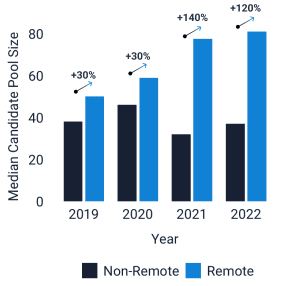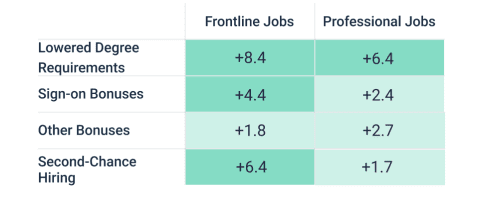Remote jobs equal success in ‘Great Resignation’
Remote positions are twice as popular with job seekers than non-remote roles, according to Datapeople.
Why You Should Care
Flexible work is the future.
Employers need to get on board if they want to thrive in the 'Great Resignation'.
Here is how they can adjust their benefits too.
The COVID-19 pandemic has transformed the world of work forever.
Full-time remote work was thrust upon millions of workers worldwide, but now two and half years since the beginning of the pandemic, “remote work and flexibility is winning with candidates”, Datapeople’s co-founder and CEO Amit Bhatia tells UNLEASH.
This is proved by data from 30 million real-world job postings from 10,000 employers using more than 100 applicant tracking systems.
According to the research by Datapeople, the number of remote jobs has increased five fold since 2019 and interest in remote work is up 400%. Just 15% of companies offer no remote or hybrid options (this is up from 50% in 2019).
In addition, Datapeople found that between 2019 and 2022 remote work attracted 2.2 times more applications than non-remote roles – this is a 120% larger candidate pool.

Credit: Datapeople’s Hiring in a Distributed World 2022 report.
Another interesting element of Datapeople’s study is that these remote candidate pools are largely inbound – aka job seekers looking for a new job amid the ‘Great Resignation‘.
In fact, remote roles attract 125% more inbound candidate pools than non-remote roles – and this trend exists regardless of job type or seniority.
Therefore, businesses who are unsure what to do in this tight labor market, Datapeople’s research noted that “if in doubt, go remote”.
It is clear that candidates are keen for remote roles – in fact they are actively seeking them out – thereby making the lives of HR departments and recruiters much easier.
Not only are the talent pools for remote jobs larger, they are also more diverse. Remote jobs attract 120% more female candidates, and therefore help to level the playing field for caregivers who either want to change jobs or to return to the workforce.
The report noted: “If your organization has the ability to offer remote work, even only for certain roles, you should choose (and advertise) this option”.
Rethinking job adverts and benefits
Datapeople’s research also looked into other ways that companies can rethink their hiring in this tight talent market. It is crucial that employers stay competitive as despite a looming recession and cost of living crisis, the ‘Great Resignation’ is showing no signs of letting up.
While embracing remote work, many companies have also introduced remote perks, Home office stipends are now twice as popular, and working from anywhere is attracting interest – whereas free office meals and snacks and commuter benefits have declined.

Credit: Datapeople’s Hiring in a Distributed World 2022 report.
In addition, employers have started to get creative with their job descriptions and requirements to try and increase the size of their labor pool.
For instance, Datapeople found that more companies than ever were lowering degree requirements, increasing the use of signing on bonuses and other bonuses, and embracing second-chance hiring (aka recruiting those with prior convictions or criminal records).

Credit: Datapeople’s Hiring in a Distributed World 2022 report.
Just some food for thought for employers struggling with high attrition rates. Is it time you thought about rephrasing your job advert?
The International Festival of HR is back! Discover amazing speakers at UNLEASH America on 26-27 April 2023.
Sign up to the UNLEASH Newsletter
Get the Editor’s picks of the week delivered straight to your inbox!

Chief Reporter
Allie is an award-winning business journalist and can be reached at alexandra@unleash.ai.
